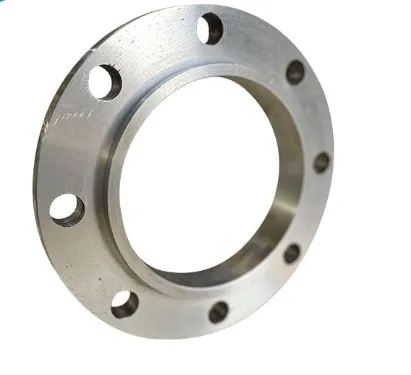-
Cangzhou Yulong Steel Co., Ltd.
-
Phone:
+86 13303177267 -
Email:
admin@ylsteelfittings.com

Dec . 17, 2024 04:20 Back to list
Key Techniques in Stainless Steel Tube Forming for Optimal Results and Efficiency
The Process and Benefits of Stainless Steel Tube Forming
Stainless steel tube forming is a critical process in the manufacturing industry, known for producing high-quality tubes that are both durable and versatile. Stainless steel, an alloy of iron with a minimum of 10.5% chromium content, is renowned for its corrosion resistance, strength, and aesthetic appeal. The forming of stainless steel tubes involves several techniques, each with its own set of advantages and applications.
Techniques of Stainless Steel Tube Forming
1. Mechanical Forming This is a common method that utilizes mechanical force to shape stainless steel. Techniques such as bending, stretching, and extruding are among the several processes used in mechanical forming. Bending, in particular, is widely used to create curves and angles in the tubes, making it ideal for applications requiring intricate shapes and designs.
2. Hydraulic Forming Hydraulic forming employs high-pressure fluids to mold stainless steel into desired shapes. This method allows for more complex shapes and is often used in specialized industries, such as aerospace and automotive, where precision and strength are paramount. Hydraulic forming achieves a uniform distribution of stress, which enhances the overall integrity of the formed tube.
3. Roll Forming This continuous process uses rolls to shape metal into a specific profile. Roll forming is highly efficient and is perfect for producing long lengths of tubes with consistent cross-sections. This method is common in the production of structural shapes and components that require a high degree of accuracy and uniformity.
4. Welding and Joining After forming, stainless steel tubes are often welded or joined together to create larger structures. Techniques such as TIG (Tungsten Inert Gas) and MIG (Metal Inert Gas) welding are employed for this purpose. These methods create strong, durable joints that maintain the material's integrity, ensuring that the finished product can withstand rigorous applications.
Applications of Stainless Steel Tubes
Stainless steel tubes are used in a myriad of applications across various industries.
- Construction In the construction industry, stainless steel tubes are used for structural support, handrails, and decorative elements due to their strength and resistance to rust. Their aesthetic appeal also makes them a popular choice for architectural designs.
- Automotive The automotive industry relies on stainless steel tubes for exhaust systems, fuel lines, and various other components. The corrosion resistance of stainless steel ensures that these critical parts remain operational for extended periods, even in harsh environments.
stainless steel tube forming

- Food and Beverage Stainless steel's hygienic properties make it ideal for the food and beverage industry. Tubes are commonly used in processing equipment, pipelines, and storage tanks, ensuring that the materials in contact with food remain uncontaminated and safe.
- Oil and Gas In the oil and gas sector, stainless steel tubes are used in drilling and exploration equipment
. Their ability to withstand extreme temperatures and pressures makes them suitable for environments where failure is not an option.Advantages of Stainless Steel Tube Forming
The benefits of stainless steel tube forming are numerous and significant.
- Corrosion Resistance Stainless steel's inherent corrosion resistance extends the life of formed tubes, making them suitable for use in challenging environments where exposure to moisture or chemicals is a concern.
- Strength and Durability Stainless steel tubes are known for their high tensile strength and durability. They can withstand significant mechanical stress, reducing the risk of failures in critical applications.
- Versatility The range of forming techniques available allows for the production of tubes in various shapes and sizes, accommodating diverse engineering needs.
- Aesthetic Appeal The polished finish of stainless steel tubes enhances their visual appeal, making them an excellent choice for applications where appearance matters, such as in architectural and decorative designs.
- Sustainability Stainless steel is 100% recyclable, making it an environmentally friendly option. The ability to reuse stainless steel reduces waste and supports sustainable manufacturing practices.
Conclusion
Stainless steel tube forming is an essential process with far-reaching applications across multiple industries. The versatility of stainless steel, combined with advanced forming techniques, enables manufacturers to produce high-quality tubes that meet the stringent demands of modern engineering. As industries continue to evolve, the significance of stainless steel tube forming will undoubtedly persist, solidifying its place as a cornerstone of manufacturing excellence.
Latest news
-
ANSI 150P SS304 SO FLANGE
NewsFeb.14,2025
-
ASTM A333GR6 STEEL PIPE
NewsJan.20,2025
-
ANSI B16.5 WELDING NECK FLANGE
NewsJan.15,2026
-
ANSI B16.5 SLIP-ON FLANGE
NewsApr.19,2024
-
DIN86044 PLATE FLANGE
NewsApr.19,2024
-
DIN2527 BLIND FLANGE
NewsApr.12,2024
-
JIS B2311 Butt-Welding Fittings LR/SR 45°/90° /180°Seamless/Weld
NewsApr.23,2024
-
DIN2605-2617 Butt-Welding Fittings LR/SR 45°/90°/180° Seamless/Weld
NewsApr.23,2024











